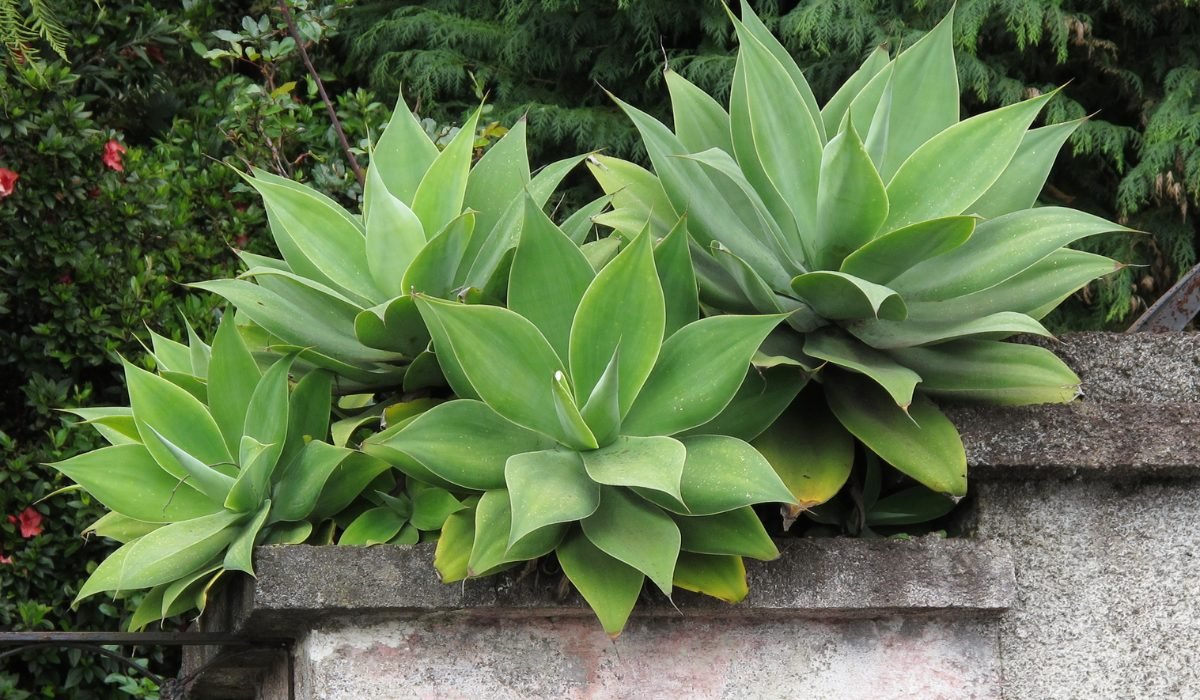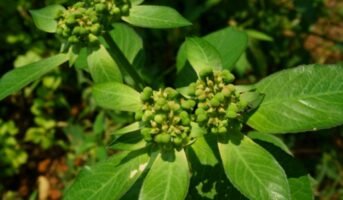A member of the Agave family, Agave attenuata has been used as an ornamental plant for centuries. It is a perennial plant that can grow up to 4 feet tall. Its flowers are white, purple, or yellow, and they bloom between February and June. This plant, commonly known as foxtail, is native to Mexico and parts of Central America. It grows well in desert regions with sandy soil and full sun exposure.Attenuata is a slow-growing succulent with soft, fleshy leaves that turn red when they’re mature. In the right conditions, this plant can grow very easily. If you want to keep it smaller, you can prune it back to just one foot. It prefers sunlight and partial shade, but will still thrive in areas with lower light levels.

Source: Pinterest
Agave attenuata: Quick facts
| Botanical Name | Agave attenuata |
|---|---|
| Common Name | Foxtail |
| Genus | Agave |
| Kingdom | Plantae |
| Clade | Tracheophytes |
| Family | Asparagaceae |
| Life Cycle | Perennial |
| Mature Size | Upto 4-5 ft in length |
| Cultivation | Central Mexico |
| Benefits | Ornamental, medicinal |
See also: Tips to grow and take care of anthurium
Agave attenuata: Physical description

Source: Pinterest
Despite its acaulescent appearance, stems often reach 50–150 cm (20–60 in) in length, and old leaves fall off, exposing the stems. Leaf sizes range from 50 to 70 cm (20 to 28 in) long and 12 to 16 cm (5 to 6 in) wide; the colour is pale grey to yellowish green.
Agave attenuata: How to grow
Propagating the plant is a simple process. It involves taking cuttings from mature plants and rooting them in moist soil. You can also take cuttings from leaf axils or the crown of mature plants and transfer them directly into pots or containers with water and fertiliser.
- To propagate your plant by taking cuttings, first select a healthy leaf and make an incision 2-3 mm deep at the base of the leaf.
- Make sure to leave at least 6 cm at one end of the cut to allow for healing.
- Then place the cutting in a jar filled with water, covering it completely with water.
- The next day, remove any floating leaves, as they will not be needed for root development.
- Once the cuttings have rooted, you can transfer them into pots or containers with soil and moisture after two days in a sunny window.
Growing Tips
- For best results, water your agave attenuata plant 2-3 times per week while it’s in its growing period.
- In the fall and winter months, try not to water your plant as much. Instead, fill any shallow containers with water so that they don’t dry out completely during these months.
Agave attenuata: Caring tips
If you have a mature plant, you should prune it regularly. The goal is to keep the plant light and airy so that it can grow more quickly. To prune, cut through two branches evenly spaced from the main stem. Cut back hardwood branches so that they are around 6 inches long. This will stimulate new growth in your plant and make it more compact. You can also remove small branches that aren’t touching each other or the main stem of the plant.
When watering your plant, make sure to only water it when the top 1/4 inch of soil around its base is dry. Watering too much or too infrequently can cause the root to rot or die altogether.
When fertilising your plant, use only organic fertilisation. Fertilisers with pesticides and chemicals could kill your plant if you aren’t careful.
Besides making a stunning houseplant, A. attenuata has very few pest problems: it is typically only bothered by spider mites and aphids. However, if you notice any mites or aphids on your plant, take action right away: A. attenuata doesn’t tolerate infestation well at all.
Agave attenuata: Uses
- Agave attenuata is a succulent plant that has been used for centuries as a natural medicine for healing wounds and burns.
- The leaves of this plant can be eaten raw or cooked, dried, or ground into a powder and mixed with water to make tea. The plant has also been used medicinally to treat constipation, diarrhoea, and stomach pain.
- This ornamental succulent has spiked evergreen leaves, and interesting flower stems that make it a popular plant among gardeners.
- Whether used as a container plant or as a bedding and border conversation piece, this plant commands attention wherever it is placed.
Agave attenuata: Toxicity
Animals are mildly poisoned by Agave attenuata, just like humans, due to the sap from the leaves.
FAQs
What is the proper way to care for agave attenuata?
Well-drained, slightly acidic, sandy or gravelly soils with full sun are ideal for growing this plant.
Trimming Agave attenuata is a regular practice, isn't it?
It is not necessary to prune Agave attenuata, but basal suckers and leaves can be removed to improve the appearance of the plant or to propagate it.
Is it possible to grow agave in pots?
Despite their relatively sparse roots and tolerance of crowding, agave plants are excellent container plants.
Housing News Desk is the news desk of leading online real estate portal, Housing.com. Housing News Desk focuses on a variety of topics such as real estate laws, taxes, current news, property trends, home loans, rentals, décor, green homes, home improvement, etc. The main objective of the news desk, is to cover the real estate sector from the perspective of providing information that is useful to the end-user.
Facebook: https://www.facebook.com/housing.com/
Twitter: https://twitter.com/Housing
Email: [email protected]











